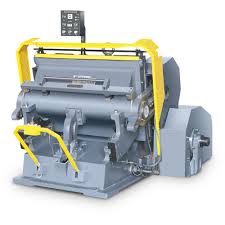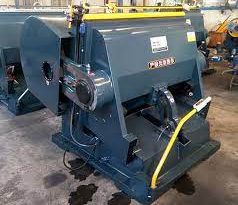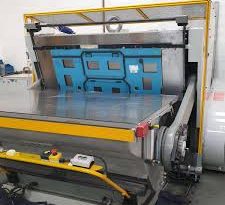The Strategic Benefits of Investing in Die-Cutting Machinery
Introduction: In today’s fast-paced production environments, having the right tools to streamline operations and enhance product quality can give businesses a significant competitive edge. Die-cutting machinery is pivotal in various industries such as packaging, print finishing, and textile manufacturing, where precision cutting shapes out of material sheets is required. This article explores the critical reasons businesses should consider investing in die-cutting machinery to optimize their manufacturing processes and achieve higher efficiency and productivity.
Key Reasons to Invest in Die-Cutting Machinery:
- Enhanced Precision and Consistency:
- Die-cutting machinery provides exceptional accuracy and repeatability, which is crucial for maintaining high-quality standards in production. Unlike manual cutting methods, die-cutting ensures that each piece is uniformly cut, reducing material waste and the need for reworks due to errors, thus significantly enhancing the overall quality of the final products.
- Increased Production Speed:
- Die-cutting machines are designed to handle high-volume production runs efficiently. These machines can operate at high speeds, cutting multiple shapes in a single pass, which drastically reduces the time required for production compared to traditional cutting methods. This increase in speed allows businesses to meet larger orders more quickly and respond to market demands more effectively.
- Versatility Across Materials:
- Modern die-cutting machines can work with a diverse range of materials, from paper and cardboard to plastics and textiles, making them extremely versatile. This versatility enables businesses to use a single piece of equipment for multiple production processes, maximizing the return on investment and reducing the need for multiple machines.
- Cost-Effectiveness:
- While the initial investment in die-cutting machinery may be significant, the long-term cost savings are substantial. Automation reduces labor costs, and the efficient use of materials decreases waste. Additionally, the durability and low maintenance requirements of high-quality die-cutting machines minimize downtime and further operational costs.
- Customization and Scalability:
- Die-cutting machinery allows for easy customization to meet specific product requirements. With the ability to quickly change dies and setup configurations, businesses can adapt to new designs and customer specifications without significant delays. This adaptability makes it easier to scale operations up or down based on current business needs and future growth.
- Improved Worker Safety:
- Manual cutting processes can pose significant safety risks to workers, especially when handling sharp tools and heavy materials. Die-cutting machines enhance safety in the workplace by automating the cutting process, reducing the need for direct interaction with cutting tools and thereby lowering the risk of workplace injuries.
Conclusion: Investing in die-cutting machinery is a strategic decision that offers multiple operational advantages. From increasing production efficiency and maintaining high-quality standards to providing versatility and reducing operational costs, die-cutting machines are invaluable assets for any manufacturing or packaging business. By leveraging the capabilities of die-cutting machinery, companies can not only improve their production processes but also strengthen their competitive position in the market, ensuring long-term growth and profitability.



